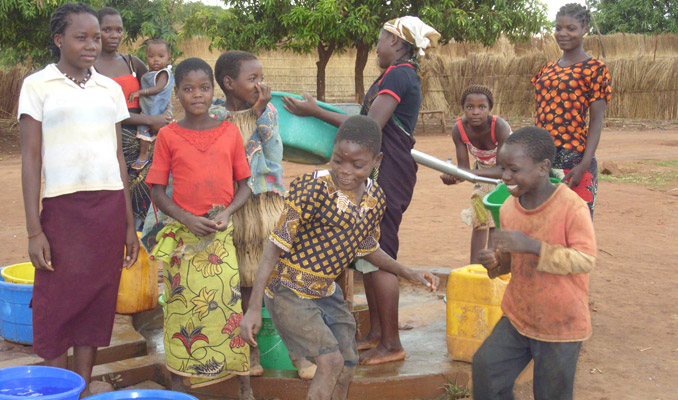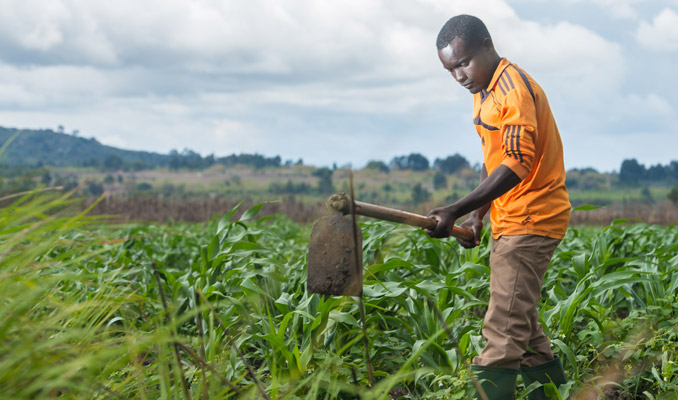Irish Aid Annual Report 2014
Ireland’s overseas aid programme is helping to lift millions of people out of poverty and hunger; reducing the number of mothers who die in childbirth and helping to tackle major health crises, including Ebola.
In 2014 we have witnessed considerable progress in our Key Partner Countries: In Ethiopia, for example, Irish Aid’s support for maternal health services for poor rural women has contributed to a 70% reduction in maternal mortality. In Zambia, our support for social cash transfers has contributed to a doubling of the number of female-headed households covered by a basic level of social protection. In Tanzania, our support for nutrition programmes has contributed to an 8% drop in chronic malnutrition rates.
The Government’s overseas aid programme, Irish Aid, is a central part of our foreign policy
Our response to humanitarian crises
Ireland’s response to humanitarian crises in 2014 is also outlined, with some €85 million provided to assist vulnerable people in countries such as Syria, South Sudan, the Central African Republic and the Democratic Republic of Congo. 269 tonnes of essential supplies – such as blankets and tents - were provided to vulnerable populations under our Rapid Response Initiative. In addition, almost €18 million was provided in Sierra Leone and Liberia to respond to the Ebola crisis.
Almost €18 million was provided in Sierra Leone and Liberia to respond to the Ebola crisis
Sustainable Development Goals
The strong reputation and results of our aid programme played a key role in Ireland’s appointment as co-facilitators to the international negotiations on the Sustainable Development Goals. We continue to prepare for the major Summit at the United Nations in New York at the end of September. There, we will agree a new agenda for global development, with the objective of ending extreme poverty and hunger in the world by 2030 – in a single generation.
Ireland continues to excel in delivering effective aid - OECD
2014 also saw a review of our aid programme by the OECD’s Development Assistance Committee. The Peer Review involved a thorough and rigorous assessment of our impact, our systems, and our priorities; and concluded that the Irish Aid programme was one of the most effective aid programmes in the world, reaching those most in need. It recognised that Ireland has a clear overall vision for development cooperation, which is integral to its foreign policy.
We spend around 80% of the aid budget on Sub-Saharan Africa; where it is needed most
In addition to programme results, there were very significant policy developments in 2014. Irish Aid’s Framework for Action was launched in September, which together with Ireland’s international development policy, One World, One Future will guide policy and programming decisions of the aid programme until 2017.

Key Results
• Tanzania: Our support for nutrition programmes has contributed to an 8% drop in chronic malnutrition rates.
• Uganda: Primary school enrolment now stands at 95% with equal numbers of girls and boys in attendance.
• Vietnam: The poverty rate of the 64 poorest districts in Vietnam reduced from 58% of people living in poverty in 2010 to 33% in 2014.
• Ethiopia: deaths during childbirth have fallen by 70% since 1990.
• Mozambique: The enrolment rate of girls aged 6 increased from 68% in 2010 to 77% in 2014.
• Mozambique: The total number of people on antiretroviral treatment to tackle HIV/ AIDS increased from 170,000 in 2009 to more than 550,000 in 2014.
• Ireland provided over €85 million in humanitarian assistance in 2014.
• Sierra Leone: The rate of stunting amongst children has decreased from 37% in 2008 to just under 29% in 2014.
• Uganda: The National Poverty Status report, published in 2014, shows that the national poverty rate reduced from 24.5% to 19.7% between 2009 and 2013.
Read more
For more details on Irish Aid results and expenditure, download the full 2014 Report now

